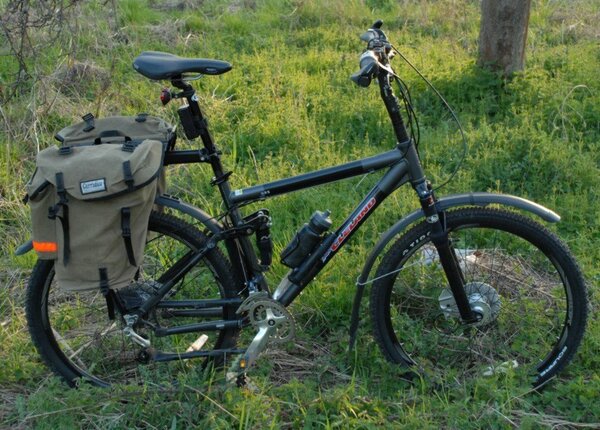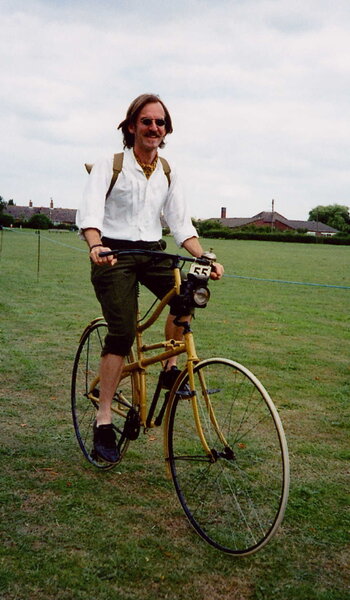- Feedback
- View
Chopper1192":1ujvrws3 said:And of course, who can forget the Highparths etc, true off road go anywhere machines, not just downhill clunkers, that can trace their lineage back to the 70's. Indeed, I'd give my left nut for a Highpath, though i should think they cost a few quid these days. In terms of true off roading they were perhaps the first, but like the Neanderthals, their lineage died out and a different branch of Homo-Offroadus came to the fore.
For me, the interesting question is not when the mountain bike was invented? but why the Clelands and Highpath designs effectively died out when they were far more suited to UK conditions than even the best of the US designs.
In fact Geoff Apps' 1979 Cleland prototypes were an independent invention from the US mountain bikes. Apps did not know of the existence of the mountain bikes until he read about them in BMX Plus magazine in 1981. And though there are many similarities between Clelands and US derived mountain bikes there are several key differences that make it difficult, or even impossible to modify US bikes so that they handle and ride like a Cleland.
The features of the Clelands and Highpaths were derived from tried and tested trials motorbike designs. Despite the roadster looks they are highly effective machines that can still hold there own against the performance of modern mountain bikes. They are more forgiving, very stable, exceptionally nimble and are exceptionally good climbers. They have free rolling 650b or 700c wheels and certainly require less maintenance than modern machines.
However the US mountain bikes evolved from the Schwinn Excelsior designs which were in fact imitation road going motorbikes, intended for those who were to young or couldn't afford a real motorbike. Some models even came with with imitation fuel tanks. They were chosen for their strength and not their off-road abilities and it took decades of tweaking to produce designs that behaved well off-road.
Cleland/Highpaths and mountain bikes are different in terms of their handling characteristics and underlying dynamics. One design is not necessarily better than the other but they are two fundamentally different solutions to the problems of riding off-road. But whilst you can buy 1,000s of variations of the mountain bike design you cannot buy a Cleland style bike at all.
Unlike the Neanderthals however, Clelands are not completely extinct as there are still a few of us who know how to make a Cleland style bike from some small framed mountain bikes or who restore and use old Clelands and Highpaths.
Spiritually, modern fat-bike riders share a very similar ethos to that of both Geoff Apps and other Highpath/Cleland owners. But a mountain bike fitted with over-sized low-pressure fat tyres is a long way off what Geoff Apps had in mind when Geoff designed the first Clelands.
In a nutshell, moving the riders weight rearwards and upwards has a number of advantages and fundamentally changes the physics involved in stability, traction, steering, torque-reaction etc. It's just a shame that people can't test ride a Cleland at their local bike shop in order to experience this difference for themselves,
http://clelandcycles.wordpress.com/philosophy/


